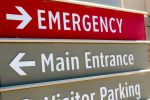Pain behind the breastbone can be caused by a common disorder of the stomach and serious emergency: pulmonary embolism, myocardial infarction or destruction of an aortic aneurysm.
If it is really infarction or the blockage of pulmonary arteries by emboli, the patient has very little time to provide him medical assistance. Therefore, the elucidation of the causes of discomfort in the chest, is often really vital task.
Of course, people who can feel pain behind the breastbone, on their own are unlikely to determine how serious it is. It is the prerogative of doctors. However, to navigate in when and which doctor should I contact should every adult.
Causes of pain behind the breastbone
The chest contains organs of the cardiovascular, digestive, respiratory, nervous and endocrine systems. With the development of the pathological process in any of these people may feel pain behind the breastbone.
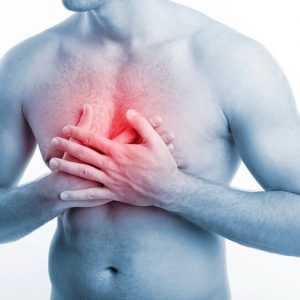
The most common cardiac and vascular causes of pain behind the breastbone:
- Myocardial infarction – extensive or local extinction of part of the cardiac muscle in the conditions of sharp shortage of oxygen.
- Angina – reversible ischemia of the myocardium, accompanied by severe pain.
- Pulmonary embolism – blockage of the pulmonary artery itself or its branches small thrombi originating from large veins of the lower extremities.
- An aortic dissection – destruction of the aortic wall, which is accompanied by massive blood loss.
- Pericarditis – an acute or chronic inflammation of the heart “bags” (the connective-tissue sheath covering the main organ of the cardiovascular system).
- Myocarditis – inflammation of the myocardium, which often develops after infectious maladies.

Diseases of the respiratory system that hurts in the chest:
- Pneumonia – inflammation of the lungs. Can have viral, bacterial and autoimmune nature.
- Pleurisy – inflammation of pleura.
- Viral or bacterial bronchitis.
Gastroenterological causes of pain behind the breastbone:
- Esophagitis – inflammation of esophagus.
- Achalasia of the esophagus – the expansion of the lower esophagus and the cardiac orifice due to neuromuscular disorders.
- Gastritis – inflammation of the stomach.
- Ulcer of the stomach.
- Gastroesophageal reflux is a very painful irritation to the delicate mucosa of the esophagus acidic stomach contents.
- Hernia hiatal. In this disease the diaphragm can not completely separate the thoracic and abdominal cavity, so part of the esophagus and the upper part of the stomach penetrate through the esophageal hole in the chest cavity.
Diseases of the nervous system, causing pain behind the breastbone:
- Intercostal neuralgia is an inflammation of the nerves between the ribs.
- Cardioneurozy – disharmony in the heart, caused by a dysfunction of the nervous system. In this pathology organic changes in the heart are not detected, i.e., no ischemia, conduction disorders and other similar disorders.
- Osteochondrosis of the spine in the cervical-thoracic. This disease is often accompanied by the entrapment and inflammation of the nerve roots, which leads to the appearance of painful sensations.
In addition, chest pain can be the result of a number of other diseases.
- injuries of the chest;
- stretching and delayed onset muscle soreness in the chest muscles after excessive physical exertion;
- inflammation of the cartilage and bone of the ribs and sternum;
- stress, neurasthenia;
- neoplastic processes in the chest.
As can be seen from the information presented that chest pain is not something that can be ignored and tolerated. This symptom indicates that the necessary medical assistance, and in cases of suspected myocardial infarction, pulmonary embolism or dissection of an aortic aneurysm – is immediate.
To what doctor to address the pain behind the sternum?
When chest pain may be two options for referral to a health facility: call ambulance and independent trip to the doctor after better. Suspected myocardial infarction, pulmonary embolism and aneurysm of the aorta is always testimony to call the ambulance. All the others mentioned in the previous section, the disease is not require a call to car emergency medical care, i.e. the patient is able to remove the attack earlier doctor prescribed drugs and then have to go to the hospital. How do you determine when you need an ambulance, and when you can do without it?
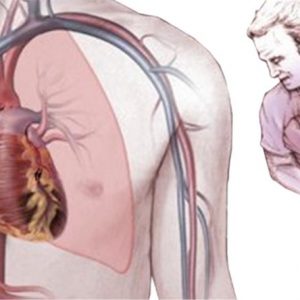
Characteristics of pain in the chest, pointing to “the danger” of the patient:
- The pain occurs acutely, suddenly, and not alone.
- Pain attack lasts more than 15 minutes.
- Pain not relieved by nitroglycerin. It should be noted that the nitroglycerin to be trifled with. This drug can be given only to those patients who know they have heart problems.
- The pain extends to the arm, neck, shoulder, jaw.
Cheerleaders also have the following symptoms:
If pain attack is accompanied by these symptoms, it is necessary to call an ambulance.
In all other cases of chest pain requires treatment by a therapist or General practitioner. He will be able to assume that it caused pain in the chest, and prescribe treatment or refer the patient to a colleague a narrower profile to the cardiologist, gastroenterologist, pulmonologist, neurologist, vascular surgeon, etc.
Features of chest pain in diseases of the digestive system
If the heart disease is a clear relationship between the presence of pain in the chest and stress or physical exertion, for ailments of the digestive organs pain is always associated with food intake.
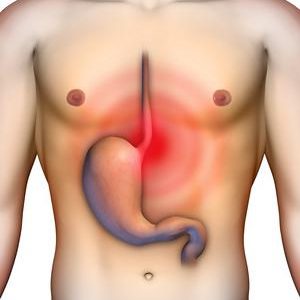
Patients who have problems with the esophagus, complain that the food is like stuck at the level of the sternum is brought up and bending forward. When the reflux of stomach contents into the esophagus after eating there is a strong burning in the chest and acid regurgitation. Gastric ulcer the pain is cutting in nature and occurs again after the use of irritating the mucous membrane of the dishes, often accompanied by nausea and vomiting.
If there is a hernia of the diaphragm, the pain are dull in nature and the dependence of food intake. Bending forward, heavy lifting, straining, coughing, discomfort increases.
Chest pain with mental disorders
In such disorders there is always a relationship of chest pain with emotional feelings and fatigue. Patients describe their feelings as follows: it’s like “there’s a rock on your chest”, heart, stabs, pounding, jumping out of the chest, troubled by the feeling of strong anxiety and panic. When the patient calms down and relaxes, pain and all other unpleasant sensations are.
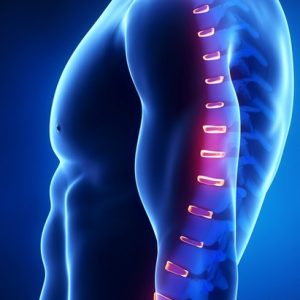
Thoracic osteochondrosis and intercostal neuralgia chest pain typically occurs during physical exertion and in certain positions, that is, when it comes to the affected nerve structures. In addition, when the intercostal neuralgia can be detected particularly painful point at palpation chest.
Chest pain in diseases of the respiratory system
Pain does not occur by itself. There is always some background – colds, chest trauma, etc. pain, usually associated with the act of breathing and cough. In addition, patients suffer from shortness of breath, there may be fever, expectoration of sputum. The longer the illness, the more pronounced become the signs of respiratory distress – shortness of breath increases, appears cyanosis of the lips and the fingertips.
Examination for chest pain
To determine the cause of chest pain, the patient is first necessary to do an ECG and chest x-ray. These diagnostic methods allow to detect heart and lung disease and to determine further tactics of examination of the patient. For example, if there are no changes, the cause of the pain should be sought in another direction – to make the fibrogastroscopy, send the patient for a consultation with a gastroenterologist, neurologist, etc.
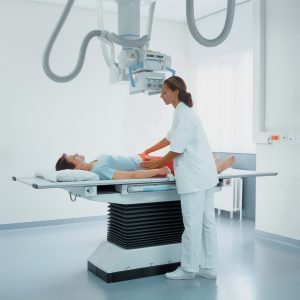
Thorough examination of patients with suspected cardiology or vascular pathology will be the following: ultrasound scanning of the heart and blood vessels, angiography (coronary angiography and selective visualization of the pulmonary artery), computed tomography of the chest. In addition, such patients are shown a series of blood tests (clinical, biochemical, tests for specific markers of ischemia and thrombosis, clotting).


